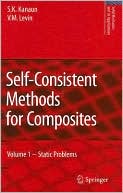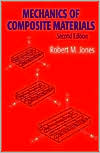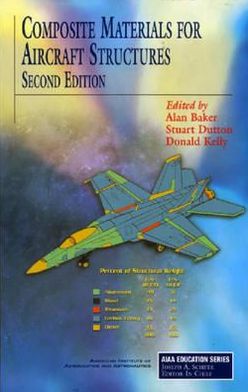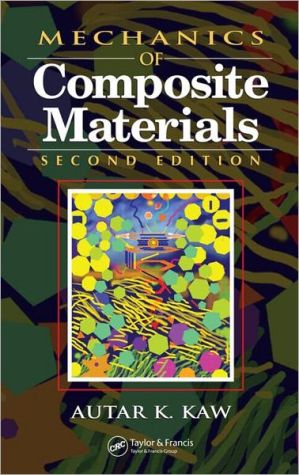Self-Consistent Methods for Composites, Volume 1: Static Problems
Search in google:
Composite and heterogeneous materials play an important role in modern material engineering and technology. This volume is devoted to the theory of such materials. Static elastic, dielectric, thermo- and electroconductive properties of composite materials reinforced with ellipsoidal homogeneous and multi-layered inclusions, short and long multi-layered fibers, thin hard and soft inclusions, media with cracks and pores are considered. Self-consistent methods are used as the main theoretical tool for the calculation of static and dynamic properties of heterogeneous materials. This book is the first monograph to develop self-consistent methods and apply these to the solution of problems of electromagnetic and elastic wave propagation in matrix composites and polycrystals. Predictions of the methods are compared with experimental data and exact solutions. Explicit equations and efficient numerical algorithms for the calculation of velocities and attenuation coefficients of the mean (coherent) wave fields propagating in composites and polycrystals are presented.The book helps materials engineers to predict properties of heterogeneous materials and to create new composite materials which physical properties are optimal to the exploitation conditions. The results of the book are useful for scholars who work on the theory of composite and heterogeneous media.
Introduction 1An elastic medium with sources of external and internal stresses 9Medium with sources of external stresses 9Medium with sources of internal stresses 17Discontinuities of elastic fields in a medium with sources of external and internal stresses 25Elastic fields far from the sources 30Notes 33Equilibrium of a homogeneous elastic medium with an isolated inclusion 35Integral equations for a medium with an isolated inhomogeneity 35Conditions on the interface between two media 40Ellipsoidal inhomogeneity 43Ellipsoidal inhomogeneity in a constant external field 48Inclusion in the form of a plane layer 54Spheroidal inclusion in a transversely isotropic medium 56Crack in an elastic medium 59Elliptical crack 64Radially heterogeneous inclusion 69Elastic fields in a medium with a radially heterogeneous inclusion 69Thermoelastic problem for a medium with a radially heterogeneous inclusion 75Multilayered spherical inclusion 77Axially symmetric inhomogeneity in an elastic medium 84Multilayered cylindricalinclusion 93Notes 96Thin inclusion in a homogeneous elastic medium 97External expansions of elastic fields 97Properties of potentials (4.4) and (4.5) 99External limit problems for a thin inclusion 103Thin soft inclusion 103Thin hard inclusion 105Internal limiting problems and the matching procedure 107Singular models of thin inclusions 110Thin ellipsoidal inclusions 111Notes 116Hard fiber in a homogeneous elastic medium 117External and internal limiting solutions 117Principal terms of the stress field inside a hard fiber 120Stress fields inside fibers of various forms 125Cylindrical fiber 125Prolate ellipsoidal fiber 129Fiber in the form of a double cone 130Curvilinear fiber 135Notes 137Termal and electric fields in a medium with an isolated inclusion 139Fields with scalar potentials in a homogeneous medium with an isolated inclusion 139Ellipsoidal inhomogeneity 141Constant external field 141Linear external field 141Spheroidal inhomogeneity in a transversely isotropic medium 143Multilayered spherical inclusion in a homogeneous medium 143Thin inclusion in a homogeneous medium 147Axisymmetric fiber in a homogeneous media 152Homogeneous elastic medium with a set of isolated inclusions 155The homogenization problem 155Integral equations for the elastic fields in a medium with isolated inclusions 158Tensor of the effective elastic moduli 160The effective medium method and its versions 162Differential effective medium method 169The effective field method 172Homogeneous elastic medium with a set of ellipsoidal inclusions 177Elastic medium with a set of spherically layered inclusions 180The Mori-Tanaka method 181Regular lattices 186Thin inclusions in a homogeneous elastic medium 192Elastic medium reinforced with hard thin flakes or bands 195Elastic medium with thin hard spheroids (flakes) of the same orientation 197Elastic medium with thin hard spheroids homogeneously distributed over the orientations 198Elastic medium with thin hard unidirected bands of the same orientation 200Elastic media with thin soft inclusions and cracks 202Thin soft inclusions of the same orientation 205Homogeneous distribution of thin soft inclusions over the orientations 205Elastic medium with regular lattices of thin inclusions 206Plane problem for a medium with a set of thin inclusions 210A set of thin soft elliptical inclusions of the same orientation 211Homogeneous distribution of thin inclusions over the orientations 212Regular lattices of thin inclusions in plane 214A triangular lattice of cracks 216Collinear cracks 217Vertical row of parallel cracks 217Matrix composites reinforced by short axisymmetric fibers 218Elastic medium reinforced with unidirectional multilayered fibers 226Thermoelastic deformation of composites with multilayered spherical or cylindrical inclusions 229The point defect model in the theory of composite materials 234Effective elastic properties of hybrid composites 239Two different populations of inclusions in a homogeneous matrix (hybrid composite) 240Two-point correlation functions for a hybrid composite with sets of cylindrical and spheroidal inclusions 244Overall elastic moduli of three-phase composites 250Conclusions 256Notes 257Multiparticle interactions in composites 259The effective field method beyond the quasicrystalline approximation 259Mean values of some homogeneous random fields 262General scheme for constructing multipoint statistical moments 268The operator of the effective properties 272Pair interactions between inclusions 274Notes 280Thermo- and electroconductive properties of composites 281Integral equations for a medium with isolated inclusions 281The effective medium method 283Differential effective medium method 286The effective field method 288Random set of thin inclusions 291Dielectric properties of composites with high volume concentrations of inclusions 294The EFM in application to two-phase composites (the quasicrystalline approximation) 295The EFM beyond the quasicrystalline approximation 299Effective dielectric permittivity in 3D-case 303Interaction between two inclusions in the 2D-case 308Dielectric properties of the composites in 2D-case 311Discussion and conclusion 314Cross-properties relations 316Notes 318Special tensor bases of four rank tensors 321E-basis 321P-basis 322[Gamma]-basis 324R-basis 324Averaging the elements of the E-, P-, [gamma]-, and R-bases 325Tensor bases of rank four tensors in 2D-space 326Generalized functions connected with the Green function of static elasticity 329The Green functions of static elasticity in the k-representation 329The Green functions of static elasticity in the x-representation 330The Green functions of static elasticity in 2D-case 337Special presentation of the K-operator 339Properties of some potentials of static elasticity concentrated on surfaces 343Gauss' and Stokes' integral theorems 343Derivatives of the double-layer potential of static elasticity 344Potentials with densities that are tensors of a surface [Omega] 349Transition through the layers in the problems of thermoelasticity for multilayered inclusions 353Elastic and thermoelastic problems for a spherical multilayered inclusion 353Elastic and thermoelastic problems for a cylindrical multilayered inclusion 354Correlation functions of random sets of spherical inclusions 357The Percus-Yevick correlation function of nonpenetrating sets of spheres in the 3D-case 357The Percus-Yevick correlation function of nonpenetrating sets of spheres in the 2D-case 357Correlation functions of the Boolean random sets of spheres and cylinders 358Random models of two populations of inclusions 359References 365Index 375








